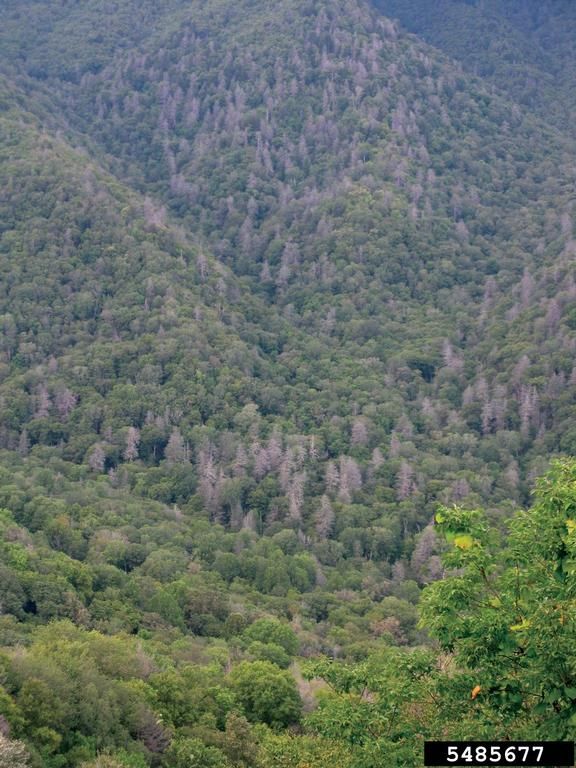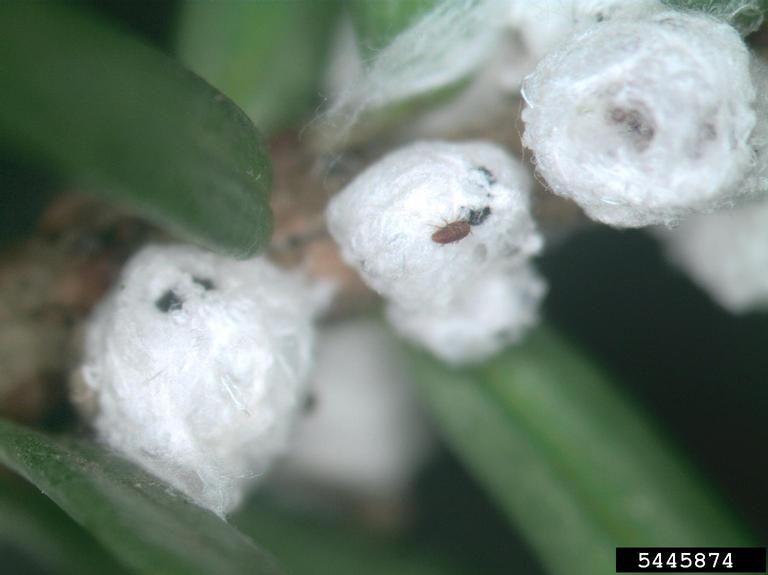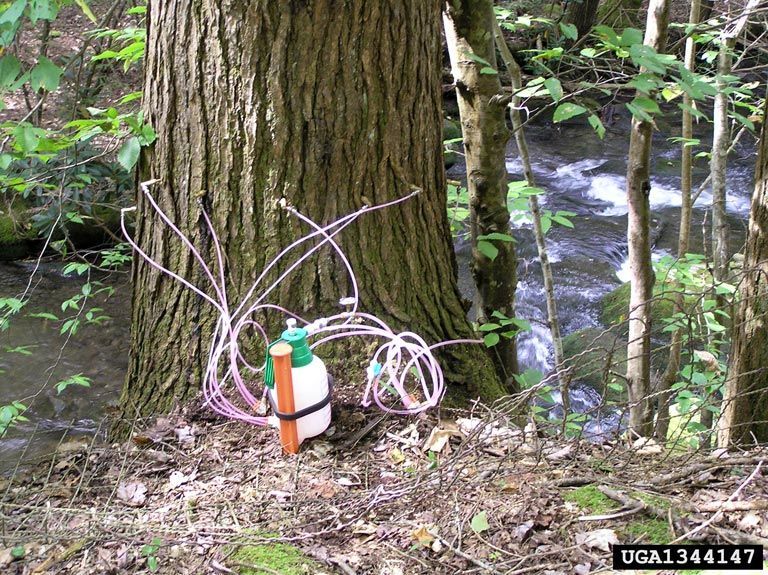Vanishing Hemlocks: Spread of Hemlock Woolly Adelgid in Michigan
History
Eastern hemlocks are coniferous trees that have been recognized in their importance for providing food, cover, and nesting sites for many wildlife species. This tree is ecologically important in preventing erosion along water ways while providing thermal cover for fish. Additionally, humans have historically used this tree species in construction and landscaping. Needless to say, hemlocks play a major ecological role in Michigan for many wildlife species. However, an invasive species was identified in Michigan in 2006 and became an infestation by 2015 per the National Park Service (NPS). This invasive sap-sucking insect, the hemlock woolly adelgid, can kill the Eastern hemlock in 4 to 10 years. The action of feeding on the host tree removes the nutrients from the tree interrupting the natural cycles within. While this adelgid is native to east Asia, it is currently found throughout 20 total states in the eastern United States as reported by the Michigan Department of Natural Resources. Michigan initially identified this species on the west coast in 2015 after it had spread from the east. This insect can spread by moving wildlife, wind, clothes, and equipment.

Current Status
The Michigan DNR has positively identified this species in Allegan, Antrim, Benzie, Leelanau, Mason, Muskegon, Oceana, Ottawa, and Washtenaw counties. Michigan has around 170 million Eastern hemlock trees that can be potentially impacted by HWA as reported by the Michigan DNR. In July of this year, MDARD updated the interior state quarantine guidelines for transport of potentially infected specimen after the exterior quarantine guidelines were updated in 2020.
Identification
The easiest way to find an invasion of Hemlock Wolly Adelgid is to first identify a Hemlock tree. HWA gets its name partially from the host plant as it is not found on any other conifers. Hemlocks are unique conifers which can be easy to identify with proper education and trained eyes. When looking at the twigs of this tree, you will find singular flat needles on a flat branch with a silvery underside due to parallel light stripes. The Michigan Department of Natural Resources also created a handy identification guide with more tips. There is large concern for the spread of this species throughout Michigan, particularly in the Upper Peninsula where Hemlock stands are abundant.
Once the tree species is confirmed to be a Hemlock, turn the branches upside down and look for small, round, white balls at the base of the needles. The best odds at identifying this infestation are from November through July annually according to the Michigan DNR. This is due to the adelgid creating the white masses along the twigs as they feed. These white masses are the ovisacs of the insects which are easier to identify as adults and can be difficult to see with the naked eye. There are many look-alikes for HWA, so it is best to research the difference and look at comparisons like this one from the DNR.

Treatment
Mechanical
If mechanical removal is required, MDARD states branches and trees can be pruned and destroyed, however, extreme care should be taken as to not continue the spread. To maintain protection on your own property, it is best to manage and prune branches hanging over driveways. This mechanical removal eliminates the chances of objects brushing against an infected tree and spreading the insect to new locations. If there is an infected tree which is removed, check your local burn ordinances and burn the infected branches to prevent further spread. If burning is not a possibility, the West Michigan Hemlock Woolly Adelgid Taskforce recommends creating a soapy water solution to dunk the branches in.
Pesticides
Qualified arborists have the ability to positively identify and treat an HWA infestation, however, there are also guides for private treatment. Trees can be treated with insecticides applied into the soil or as a basal trunk spray which need to be reapplied based on the product label. The National Park Service also emphasizes the cleaning of equipment used for this control to help prevent the spread. Additional treatments that have been used in the past also include direct treatment of the canopy and branches.

Biocontrol
Biocontrol in natural resources management is when another species is used to control a problem species. A common example of this includes using domesticated goats to control encroaching vegetation. Attempts to use biocontrol for hemlock woolly adelgid in the Smoky Mountains utilized predator beetles (Sasajiscymnus tsugae) in impacted areas. This beetle is in the lady beetle family native to the Northwestern United States. The NPS has reported success from this control method when combined with other control methods when trialed in the southern states. However, the NPS states pesticide treatment to be more cost-effective and openly available when compared to the beetles. Additional control can include removing bird feeders and baths between April and July to promote a form of natural control of this insect.
Get Involved
If you positively identify hemlock woolly adelgid, report it immediately and do not move the infestation as this can lead to spread. Reports can be made with photos and location information sent to MDARD at MDA-Info@michigan.gov or at MISIN online or on the app.



